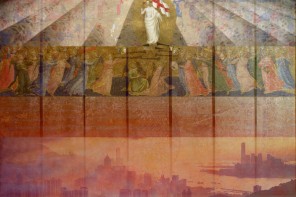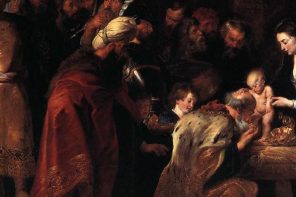As part of the Transept exhibition Enfolding: A Study of Margins and Centres, members from Playback Edinburgh, Mosaic Playback and True Heart Theatre in London, led by Transept’s Karen Kiefer, held a performance in Saint Andrew’s Episcopal Church amidst the exhibition. Entitled Enfolding Our Stories, the performance initiated a dynamic event of introspection and contemplation. In Playback Theatre, the audience members take an active role by offering their own experiences and insights to the actors who then, as the name suggests, ‘play back’ those experiences through their own improvised interpretations. Particularly in focus that evening was the exhibition. The audience members were asked about their responses to the exhibition and the pieces therein. After someone offered a response, the performance began with an affirmative ‘Let’s watch’ from Karen, and a unique exchange unfolded as the actors communicated those responses back to the audience, a playful dance of giving and receiving.
One might worry that a performance taking place inside an exhibition, itself already inside a church, would be distracting, or that the surrounding networks of meaning might limit the scope of the performance’s exploration. But the opposite took place. Rather than overshadowing or constraining the actors and audience, the exhibition lent a wealth of associations and significations that reverberated throughout the afternoon. The performance had its own moments of enfolding, of bringing into relief various ways we experience margins and centres and expanded the framework of the exhibition’s themes.
Words like gentleness, alienation, complex encircling, flowers and missiles were offered by the audience. Taken up by the performers, these ideas materialised into a palpable energy—sharing one’s story can be a risk. It’s an activity of vulnerability. Even more so when done in front of a large gathering. It was here that the theme of the exhibition seemed most resonant. The connections being made by audience and actors were not just associations between words, concepts, movements and sounds, but were acts of inclusion, a bringing-together of diverse impressions into a shared space. What was isolated and unsaid becomes communal, enfolded in a shared experience.





